Menu
-
Menuالعدمة
- Home
-
التصنيفات
-
-
التصنيفات
-
بذور الخضروات
-
أصناف حسب البلد
- أصناف من أرمينيا
- أصناف من البوسنة والهرسك
- أصناف من كرواتيا
- أصناف من فرنسا
- أصناف من ألمانيا
- أصناف من اليونان
- أصناف من المجر
- أصناف من الهند
- أصناف من إيطاليا
- أصناف من اليابان
- أصناف من شمال مقدونيا
- أصناف من بيرو
- أصناف من روسيا
- أصناف من صربيا
- أصناف من سلوفينيا
- أصناف من اسبانيا
- أصناف من تايلاند
- أصناف من تركيا
- أصناف من الولايات المتحدة الأمريكية
- بذور الطماطم
- بذور الذرة
- عائلة القرع
- الفول الأسرة
- بذور الخيار
- بذور الفلفل
- عائلة الجزرة
- عائلة البصل
- بذور الخس
- عائلة البطاطس
- عائلة الملفوف
- بذور الفجل
- عائلة الشمندر
- بذور البطيخ
- بذور بطيخ
- بذور القرنبيط
- عائلة عباد الشمس
-
أصناف حسب البلد
- بذور الفاكهة
- بذور الفلفل الحار
- بذور عشبة طبية
- تسلق بذور النباتات
- الأشجار - بذور بونساي
- بذور النخيل
- بذور الأعشاب الزينة
- بذور التبغ
-
بذور الخضروات
-
-
-
-
- منتجات جديدة
- التسليم - الدفع
- انشئ حساب
- FAQ
Last Product Reviews
Out of the two seeds, one germinated and the other one was dead and floatin...
By
 Riikka H on 07/03/2024
Riikka H on 07/03/2024
Verified Purchase
أصناف من اليابان
يوجد 25 منتجا.
عرض 1-15 من 25 منتجات

نبات عملاق (به ثمار عملاقة)

متنوعة من اليابان


بذور الفجل الياباني العملاق...
السعر
1.95 €
(SKU: VE 107)
Seeds Gallery EU,
5/
5
<meta http-equiv="Content-Type" content="text/html; charset=UTF-8" />
<h2><strong>بذور الفجل الياباني العملاق Japana F1</strong></h2>
<h2><span style="color: #ff0000;"><strong>ثمن عبوة 10 بذور.</strong></span></h2>
<p>الفجل الأبيض العملاق الياباني له فاكهة طويلة جدًا. الفاكهة بيضاء ونقية! يمكن التقاط الثمار في غضون 85 يومًا. جذره طويل ، أبيض ، أسطواني ، مع نهاية حادة. في ظل الظروف الجيدة ، يمكن أن يصل طول الجذر إلى 75 سم.</p>
VE 107 (10 S)


متنوعة من اليابان
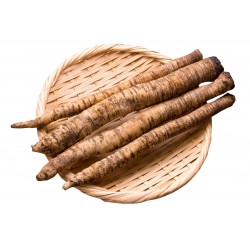
Burdock – Takinogawa Seeds...
السعر
1.65 €
(SKU: MHS 47)
Seeds Gallery EU,
5/
5
<div id="idTab1" class="rte">
<h2><strong>Burdock – Takinogawa Seeds Japanese Variety (Arctium lappa)</strong></h2>
<h2><span style="color: #ff0000;"><strong>Price for a Package of 10 seeds.</strong></span></h2>
<p>Burdock is native to temperate Europe and Asia and a most popular variety root vegetable in Japan. “Takinogawa” is a special, late-variety burdock that is rich in flavour. This important Japanese vegetable is essential to many classic Japanese dishes including "kimpira," made with sautéed burdock and carrots. The tap root can be as long as a metre long (36in), they have a texture similar to parsnips and when cooked quickly, retain their crispiness; the outer skin is very thin, similar to carrots.</p>
<p>In England, Burdock is best known as an ingredient in the beverage Dandelion and Burdock, the English equivalent of American root beer. The key flavour profile is anise, perhaps a touch of ginger and spice, but generally a feel of summer, hedgerows and fun!</p>
<p>Burdock is a biennial, producing a rosette of leaves in the first year, then completing its life cycle by flowering and seeding in the second year. Mature plant can reach 3 feet in height. It is easily grown from seed it prefers a deep and sandy garden soil in partial shade or full sun. It may be sown directly from early spring on into summer, with plenty of time left to get a good harvest of roots.<br /><br />Burdock is the hardiest root vegetable and winters in the garden easily for spring digging. Work the soil deeply for best crop and cook like carrots. Seeds can be sprouted like bean sprouts; nothing goes to waste with this plant.</p>
<p><strong>Sowing:</strong> Sow from early spring on into summer <br />Soak seeds for 2 to 4 hours in warm water then sow the burdock seeds about 7mm (¼ in) deep and pat down the row. Burdock seeds germinate in 1 to 2 weeks. Keep weeded and thin to about 10cm (4in) apart. The plant prefers regular watering. The reason for keeping the plants so close together is that it makes the roots grow long and thin, which is desirable, and it lessens the labour involved in digging, as more roots are dug out of a smaller space.</p>
<p><strong>Harvesting Burdock: <br /></strong>Moderate harvest of the leaves throughout the season will not deter root development. The burdock roots are ready to harvest after two to four months. You don’t have to wait until the tops are dormant, but of course to obtain the largest possible roots (which can weigh up to two pounds), then harvest after the tops die back in the autumn.</p>
<p>Digging the roots can be difficult, unless the soil is a deep sandy loam. The best technique is to trench down the side of the row with a spade, then push the spade in behind the roots and lever them into the trench, being careful not to break them. Also be careful not to break the spade. (This is the part where you are glad you planted them closely together.) Dig and wash the roots and then split them down the length. A large root should be split into at least 4 pieces. Dry the burdock root pieces on screens in a dark, airy location or use a vegetable/fruit dehydrator. When the pieces snap and are internally dry, they may be ground up to make a tincture or stored in plastic bags or glass jars for later use.</p>
<p><strong>Culinary Uses: <br /></strong>Very young roots can be eaten raw, but older roots are usually cooked. Cut root into slivers and stir-fry. Young leaves and stalks are eaten raw or cooked. Seeds can be sprouted like bean sprouts; nothing goes to waste with this plant.</p>
<p><strong>Medicinal Uses: <br /></strong>Fresh burdock root or the tincture of dried root is taken internally as a treatment for skin complaints. Often combined with dandelion or yellow dock, burdock root is an effective blood purifier used to treat psoriasis, eczema, oily skin, acne, boils, and gout. The leaf may be picked as needed for tea as soon as it reaches sufficient size. For more information on the use of burdock root in home herbal medicine, see the book “Making Plant Medicine.” by Richard A. Cech ISBN: 9780970031204</p>
<p> </p>
<p><strong>WIKIPEDIA:</strong></p>
<p>Arctium is a genus of biennial plants commonly known as burdock, family Asteraceae.[3] Native to the Old World, several species have been widely introduced worldwide.</p>
<p><strong>Description</strong></p>
<p>Plants of the genus Arctium have dark green leaves that can grow up to 28" (71 cm) long. They are generally large, coarse and ovate, with the lower ones being heart-shaped. They are woolly underneath. The leafstalks are generally hollow. Arctium species generally flower from July through to October.</p>
<p>The prickly heads of these plants (burrs) are noted for easily catching on to fur and clothing (being the inspiration for Velcro®[5]), thus providing an excellent mechanism for seed dispersal.[4] Burrs cause local irritation and can possibly cause intestinal hairballs in pets. However, most animals avoid ingesting these plants.</p>
<p>Birds are especially prone to becoming entangled with their feathers in the burrs leading to a slow death, as they are unable to free themselves.</p>
<p>A large number of species have been placed in genus Arctium at one time or another, but most of them are now classified in the related genus Cousinia. The precise limits between Arctium and Cousinia are hard to define; there is an exact correlation between their molecular phylogeny. The burdocks are sometimes confused with the cockleburs (genus Xanthium) and rhubarb (genus Rheum).</p>
<p>The roots of burdock, among other plants, are eaten by the larva of the Ghost Moth (Hepialus humuli). The plant is used as a food plant by other Lepidoptera including Brown-tail, Coleophora paripennella, Coleophora peribenanderi, the Gothic, Lime-speck Pug and Scalloped Hazel.</p>
<p>The green, above-ground portions may cause contact dermatitis in humans due to the lactones the plant produces.</p>
<p><strong><em>Uses</em></strong></p>
<p><strong>Food and drink</strong></p>
<p>The taproot of young burdock plants can be harvested and eaten as a root vegetable. While generally out of favour in modern European cuisine, it remains popular in Asia. Arctium lappa is called (牛蒡), pronounced "gobō" (ごぼう) in Japanese or "niúbàng" in Chinese, in Korea burdock root is called "u-eong" (우엉) and sold as "tong u-eong" (통우엉), or "whole burdock". Plants are cultivated for their slender roots, which can grow about one metre long and two centimetres across. Burdock root is very crisp and has a sweet, mild, and pungent flavour with a little muddy harshness that can be reduced by soaking julienned or shredded roots in water for five to ten minutes.</p>
<p>Immature flower stalks may also be harvested in late spring, before flowers appear; their taste resembles that of artichoke, to which the burdock is related. The stalks are thoroughly peeled, and either eaten raw, or boiled in salt water.[7] Leaves are also eaten in spring in Japan when a plant is young and leaves are soft. Some A. lappa cultivars are specialized for this purpose. A popular Japanese dish is kinpira gobō (金平牛蒡), julienned or shredded burdock root and carrot, braised with soy sauce, sugar, mirin and/or sake, and sesame oil. Another is burdock makizushi (sushi filled with pickled burdock root; the burdock root is often artificially coloured orange to resemble a carrot).</p>
<p>In the second half of the 20th century, burdock achieved international recognition for its culinary use due to the increasing popularity of the macrobiotic diet, which advocates its consumption. It contains a fair amount of dietary fiber (GDF, 6g per 100g), calcium, potassium, amino acids,[8] and is low in calories. It contains a polyphenol oxidase,[9] which causes its darkened surface and muddy harshness by forming tannin-iron complexes. Burdock root's harshness harmonizes well with pork in miso soup (tonjiru) and with Japanese-style pilaf (takikomi gohan).</p>
<p>Dandelion and burdock is today a soft drink that has long been popular in the United Kingdom, which has its origins in hedgerow mead commonly drunk in the mediæval period.[10] Burdock is believed to be a galactagogue, a substance that increases lactation, but it is sometimes recommended to be avoided during pregnancy based on animal studies that show components of burdock to cause uterus stimulation.</p>
<p>In Europe, burdock root was used as a bittering agent in beer before the widespread adoption of hops for this purpose.</p>
<p>The American composer Christian Wolff composed a work for variable performers entitled "Burdocks" in 1970-71.</p>
<p><strong>Traditional medicine</strong></p>
<p>Folk herbalists considered dried burdock to be a diuretic, diaphoretic, and a blood purifying agent[citation needed]. The seeds of A. lappa are used in traditional Chinese medicine,[citation needed] under the name niubangzi (Chinese: 牛蒡子; pinyin: niúbángzi; Some dictionaries list the Chinese as just 牛蒡 niúbàng.)</p>
<p>Burdock is a traditional medicinal herb that is used for many ailments. Burdock root oil extract, also called Bur oil, is currently used in Europe in the belief that it is a useful scalp treatment.[citation needed] Modern studies indicate that burdock root oil extract is rich in phytosterols and essential fatty acids (including rare long-chain EFAs).</p>
<p><strong>Burdock and Velcro</strong></p>
<p>After taking his dog for a walk one day in the early 1940s, George de Mestral, a Swiss inventor, became curious about the seeds of the burdock plant that had attached themselves to his clothes and to the dog's fur. Under a microscope, he looked closely at the hook system that the seeds use to hitchhike on passing animals aiding seed dispersal, and he realized that the same approach could be used to join other things together. The result of his studies was Velcro.</p>
</div>
MHS 47 (10 S)


متنوعة من اليابان

Japanese Heirloom Melon...
السعر
2.35 €
(SKU: V 122)
Seeds Gallery EU,
5/
5
<h2><span style="font-size:14pt;"><strong>Japanese Heirloom Melon Seeds “Sakata's Sweet”</strong></span></h2>
<h3><span style="color:#ff0000;font-size:14pt;"><strong>Price for Package of 10 seeds.</strong></span></h3>
<p>Sakata’s Sweet Green melon is a smaller, softball-sized melon (weight about 500g) with a grey-green skin that turns a yellow-green color when ripe. The shape is not quite round, with a distinct pucker at the stem base. Whereas most melon stems will detach from the plant when ripe, the stem of the Sakata’s Sweet Green melon must be cut from the plant when leaves begin to discolor. The edible skin of the heirloom melon is thin and the yellow-green flesh is crisp and fragrant. Sakata’s Sweet Green melon looks much like a honeydew melon in coloring and has a similar flavor profile. The flesh is juicy with a texture that can be somewhat grainy.</p>
<p>SAKATA'S SWEET</p>
<p><strong>Seasons/Availability</strong></p>
<p>Sakata’s Sweet Green melons are available year-round in sub-tropical and tropical areas with a peak season during the summer months.</p>
<p><strong>Current Facts</strong></p>
<p>Sakata’s Sweet Green melons are an heirloom variety of Cucumis melo that have grown in China and Japan for thousands of years. The small melons were bred by the Sakata Seed Co. of Japan, taking its name from the company. In the United States, the melons can be found in Asian markets as “Asian Green melon”.</p>
<p><strong>Applications</strong></p>
<p>Sakata’s Sweet Green melon is often eaten fresh, whether sliced or cut into cubes. The melon is used for pickling in Asia and its flavor lends a sweetness to chicken curry salads. Cut into wedges for a sweet summer snack or into bite-sized pieces to add to fruit or savory salads. Melon will keep at room temperature for up to a week once ripe. Cut melon should be kept refrigerated and consumed within four days.</p>
<p><strong>Geography/History</strong></p>
<p>Only recently appearing in American markets, Sakata’s Sweet Green melons were grown in Japan and China for centuries. The seeds for this heirloom melon were released by the Sakata Seed Co. in Yokohama, Japan. The seeds have found a market with home gardeners in both the United States and abroad.</p>
<p><iframe width="640" height="385" src="https://www.youtube.com/embed/XTKEyF0x7Kk?rel=0&hd=0" frameborder="0" class="embed-responsive-item"> </iframe></p>
V 122 (10 S)


نبات عملاق (به ثمار عملاقة)

متنوعة من اليابان

Daikon Giant Long Japanese...
السعر
2.35 €
(SKU: VE 128)
Seeds Gallery EU,
5/
5
<meta http-equiv="Content-Type" content="text/html; charset=UTF-8" />
<h2><strong>“Daikon” Giant Long White Japanese Radish Seeds</strong></h2>
<h2><span style="color: #ff0000;"><strong>Price for a Package of 20 seeds.</strong></span></h2>
<p><span>Daikon radishes are used for pickles, cooking and grated raw in salads. Very easy to grow this asian radish. They grow very large (50 cm and 4 kg) but taste better picked young. Produces long white tapered roots with a mild mustard flavour. Used in Japanese Taku-An pickles. Becoming very popular due to its mild mustard flavours.</span></p>
<p><span>Widespread in ancient times, said to originate from China and Japan. Matures quickly. Likes rich soil. Keep well watered. Grow fresh crisp radish any time, will withstand light frost.</span></p>
VE 128 (20 S)


متنوعة من اليابان

بذور Yuzu ، فواكه الحمضيات...
السعر
4.15 €
(SKU: V 118 Y)
Seeds Gallery EU,
5/
5
<h2><strong>بذور Yuzu ، فواكه الحمضيات اليابانية -20 درجة مئوية - الحمضيات junos</strong></h2>
<h2><span style="color: #ff0000;"><strong>ثمن حزمة من 2 أو 4 البذور.</strong></span></h2>
<p>The fruit looks somewhat like a small grapefruit with an uneven skin, and can be either yellow or green depending on the degree of ripeness. It is hardy to <strong>-20C.</strong></p>
<p>Yuzu limes are small to medium in size, averaging 5-10 centimeters in diameter, and are round, oblate, to slightly lopsided in shape. The peel is thick, pebbly, rough, pocked with many prominent oil glands and pores, and matures from dark green to golden yellow. Underneath the peel, the yellow flesh is minimal, divided into 9-10 segments by white membranes, contains some juice, and is filled with many large, inedible cream-colored seeds. Yuzu limes are highly aromatic, and the rind is rich in essential oils that are released when the fruit’s surface is scratched or cut. The juice and zest also have a unique, acidic blend of sour, tart, and spicy flavors with notes of lime, grapefruit, mandarin. <br /><br /></p>
<h2>Seasons/Availability</h2>
<p><br />Yuzu limes are available in the winter through the early spring. <br /><br /></p>
<h2>Current Facts</h2>
<p><br />Yuzu limes, botanically classified as Citrus junos, are slow-growing citrus that are found on an evergreen tree or shrub that can reach over five meters in height and belongs to the Rutaceae family. Believed to be a hybrid between the satsuma mandarin and the ichang papeda, Yuzu limes are not botanically a lime but have earned the title since they are often prepared and used similarly. Yuzu limes are mainly cultivated in China, Japan, and Korea and are favored for their tart and spicy juice and zest. They are also valued for their strong fragrance and in Japan, it is one of the most popular scents to be used for cosmetics, candles, cleaning supplies, and bath products. While popular in Asia, Yuzu limes are still relatively unknown in the Western world, but they have been gaining awareness through famous chefs praising and using its unique flavor. <br /><br /></p>
<h2>Nutritional Value</h2>
<p><br />Yuzu limes are an excellent source of potassium and vitamin C. They also contain flavonoids, vitamin P which can help absorb other nutrients and increase circulation, and nomilin, which can help aid the body in relaxation. <br /><br /></p>
<h2>Applications</h2>
<p><br />Yuzu limes are best suited for both raw and cooked applications and are used for their juice and zest. When juiced, Yuzu limes can be mixed into sauces, vinegar, dressings, and marinades, or they can be shaken into cocktails, flavored water, and tea. Yuzu lime peels can also be used to flavor salted butter for seafood dishes, zested over salad or sashimi, used to flavor ponzu sauce, or ground into powdered form and sprinkled over dishes as a concentrated flavor. In addition to savory dishes, Yuzu lime juice and zest can be baked into tarts or pies, mixed into sorbets, or used in custard. Yuzu limes pair well with coriander, mint, eggs, sashimi, scallops, grilled fish, snow crab, poultry, steak, pork, pepper, black sesame seeds, cumin, lime, raspberry, pomegranate, and cherries. The fruits will keep two weeks when stored in the refrigerator. <br /><br /></p>
<h2>Ethnic/Cultural Info</h2>
<p><br />In Japan, the Yuzu lime is one of the most popular fragrances and is most well-known for its use in the winter solstice bath. Each year during the winter solstice, public bathhouses will slice the fruit in half and float them in hot water, creating an aromatic experience. This bathing practice dates back to the 18th century and soaking in Yuzu water is believed to help prevent sicknesses such as flu and colds, and the essential oils and vitamin C are believed to help soften the skin and relieve pain. In addition to bathing, the Yuzu fragrance is also utilized in Yuzu tama or Yuzu egg production. On the island of Shikoku, Japan, farmers feed their hens a mixture of Yuzu peel, sesame seeds, corn, and kale to naturally create an egg that has the flavor and scent of the Yuzu lime. These eggs are sold at a premium price and are traditionally used for tamago kake gohan, which is cooked rice with a raw egg mixed in. <br /><br /></p>
<h2>Geography/History</h2>
<p><br />The origins of Yuzu limes are somewhat disputed among scientists, but the majority of scientists conclude that the fruit’s origins are within the upper regions of the Yangtze River in China and have been growing since ancient times. Yuzu limes were then introduced to Japan in 710 CE where they became increasingly popular for their light scent. In 1914, Frank Meyer, the man who discovered the Meyer lemon, visited China and brought seeds from the Yuzu fruit back to the United States. Included in his description of the fruit, he noted that he sourced the seeds from the Hubei Provence along the upper slopes of the Yangtze River at an astonishing elevation of 4,000 feet. The temperatures dip below freezing in that area, and there are no other citrus varieties that grow near the region. Today Yuzu limes are predominately available at local markets in Asia, but there are also a few farms in the United States that commercially cultivate the fruit and sell at farmers markets and specialty grocers</p>
<script src="//cdn.public.n1ed.com/G3OMDFLT/widgets.js"></script>
V 118 Y (2 S)


متنوعة من اليابان

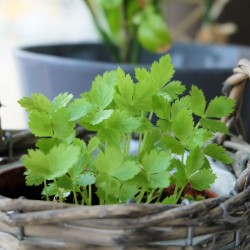
Mitsuba Japanese Parsley...
السعر
1.95 €
(SKU: MHS 115)
Seeds Gallery EU,
5/
5
<h2><strong>Mitsuba Japanese Parsley Seeds (Cryptotaenia Japonica)</strong></h2>
<h2><span style="color: #ff0000;"><strong>Price for Package of 50 (0,13 g) seeds.</strong></span></h2>
<p>Cryptotaenia japonica, commonly called Japanese parsley, Japanese honeywort or mitsuba, is an herbaceous perennial with foliage that somewhat resembles a flat-leaved parsley. It is native to moist woodland areas and ditches in eastern Asia. Branching stems of ternate compound leaves (mitsuba means three leaves in Japanese) with serrated ovate segments (each to 2-4" long) typically grow in an upright clump to 12-18" tall and as wide. Small white flowers in umbels bloom in summer on stems rising about 6" above the foliage. Seeds ripen in August-September. Plants are frequently used as culinary herbs in Asian cuisine. Leaves and stems are considered to have a parsley/celery-like flavor and may be added to soups, salads or other hot/cold dishes as a flavoring and/or garnish. Roots can be blanched and sauteed.</p>
<p>Forma atropurpurea plants have ruffled purple-black foliage and stems which contribute significant ornamental interest to garden areas. Umbels of light pink to purple flowers bloom above the foliage in midsummer bringing plant height to 24" tall. Leaves typically lose sharp color intensity as the summer progresses. Culinary uses are the same as for species plants. Very closely related to Cryptotaenia japonica is the North American species Cryptotaenia canadensis, which is native from Quebec to Manitoba south to Georgia and Texas. In Missouri, it is found in rocky woods, ravines, valleys and along streams and bluff ledges throughout the State (Steyermark).</p>
<p>Genus name comes from the Greek word cryptos meaning hidden and tainia meaning band, ribbon or fillet in probable reference to oil tubes hidden or concealed in the fruits.</p>
<p>Specific epithet means of Japan.</p>
<p><strong>Problems</strong></p>
<p>No serious insect or disease problems. Watch for slugs and snails.</p>
<p><strong>Garden Uses</strong></p>
<p>Culinary herb for herb gardens. Purple foliage has good ornamental value for rock gardens, borders or shady areas of the landscape. Containers.</p>
<p><strong>Cultivation details</strong></p>
<p>Succeeds in most soils, preferring a moist shady position under trees where it often self-sows. The leaves tend to turn yellow when plants are grown in full sun. This species is not winter-hardy in all areas of Britain, though plants can tolerate short periods at temperatures down to -10°c. Mitsuba is commonly cultivated as a vegetable in Japan, there are some named varieties. It is usually grown as an annual. It is closely allied to C. canadensis, and is considered to be no more than a synonym of that species by some botanists[200]. This plant is adored by slugs and snails and must be protected when small or when new growth is emerging in the spring.</p>
MHS 115 (50)


متنوعة من اليابان


بذور القرع الأسود فوتو...
السعر
2.35 €
(SKU: VG 31)
Seeds Gallery EU,
5/
5
<h2 dir="rtl"><strong>بذور القرع الأسود فوتو اليابانية</strong></h2>
<h2 dir="rtl"><span style="color: #ff0000;"><strong>ثمن عبوة من 5 بذور.</strong></span></h2>
القرع الياباني الأسود النادر ، الثمار مفلطحة ومستديرة ولها تضليع ثقيل. فريد جدا وجميل. سوف تتحول الفاكهة السوداء إلى لون كستنائي غني في التخزين. اللحم ذهبي اللون وله طعم غني للبندق. الثمار 3-5 أرطال (1-3 كجم). كل واحد ، والكروم تعطي غلة ضخمة. اليابانيين ، ذوي البشرة الداكنة ، المسطحين ، قاموا بعمل ممتاز هنا. شائع لدى مزارعي السوق الأوروبية. مقاومة الحشرات الجيدة تجعل هذا الفائز هنا!<br /><br />(C. moschata) 105 يوم
<script src="//cdn.public.n1ed.com/G3OMDFLT/widgets.js"></script>
VG 31 (5 S)


لا يمكن دفع هذا المنتج باستخدام PayPal أو البطاقة

نبات عملاق (به ثمار عملاقة)

متنوعة من اليابان
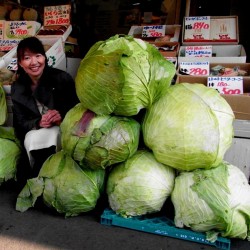
Japanese Giant Cabbage Seeds
السعر
2.65 €
(SKU: VE 222)
Seeds Gallery EU,
5/
5
<h2><strong>Japanese Giant Cabbage Seeds</strong></h2>
<h2><span style="color: #ff0000;"><strong>Price for Package of 20 seeds.</strong></span></h2>
<p><span>It is a gigantic Japanese cabbage, which grows to an enormous size. Interestingly, he does not need any more time than ordinary cabbage to reach that size.</span></p>
<p><span>Surely there will be vegetables in your garden that will attract passersby views.</span></p>
VE 222 (20 S)


متنوعة من اليابان
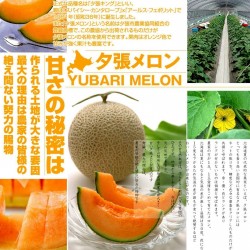
Yubari King Melon Seeds...
السعر
4.95 €
(SKU: V 2)
Seeds Gallery EU,
5/
5
<meta http-equiv="Content-Type" content="text/html; charset=UTF-8" />
<h2><strong>Yubari King Melon Seeds أغلى فاكهة في العالم</strong></h2>
<h2><span style="color: #ff0000;"><strong>ثمن عبوة 5 ، 10 ، 50 بذرة.</strong></span></h2>
<p>طوكيو - حقق كانتلوب حلو بشكل ملحوظ تم بيعه بالمزاد العلني في اليابان رقماً قياسياً بلغ 12 ألف دولار ، مما جعله أحد أغلى الكنتالات التي تم بيعها في البلاد.</p>
<p>In a society where melons are a luxury item commonly given as gifts the jaw-dropping auction last month shocked everyone! At that auction, a pair of "Yubari" cantaloupe melons sold for a record $23,500. Wikipedia Yubari</p>
<p>A pair of cantaloupes from the bankrupt city of Yubari, Hokkaido, fetched a whopping 2 million yen at the first auction of the season at the Sapporo central wholesale market, the Japan Agricultural Cooperative's Yubari unit said. The price paid by Marui Imai Inc., a Sapporo-based department store, for the upmarket produce surpassed the previous record of 800,000 yen for two cantaloupes, JA Yubari said. "Perhaps the city's designation as a financially rehabilitating entity ironically helped generate an advertising effect," said a spokesperson for the former coal town, which went bankrupt last year. "This will encourage the city a lot."</p>
<p>The two melons were put on display at Marui Imai's flagship outlet priced at 1 million yen apiece. Yoshikazu Hoshino, 59, a purchasing officer at the department store, said the cantaloupes were more for publicity than profit. "We were bullish in the bidding because we're celebrating our 135th anniversary this year. We wanted as many customers as possible to see them," he said. One of the million-yen fruits has already been sold, the store said. Other shoppers were stunned by the price.</p>
<p>"It's not a price I can afford," said Ryoko Hino, a 79-year-old shopper.</p>
<p>So the Yubari King costs generally from 100 to 1000 € / piece.</p>
<p>How to Cultivate Yubari King Melon</p>
<p>Side Selection</p>
<p>Try to plant in a location that enjoys full sun and remember to water often. Keep in mind when planting that Yubari King is thought of as hardy, so this plant will survive close to or on freezing temperatures.</p>
<p>Soil</p>
<p>The soil the melons are grown in is volcanic ash. It's not what's in the volcanic soil, but how the soil behaves. It lets growers there easily control the temperature of the soil, and the ash lets water quickly drain through, allowing for the top to remain dry, which promotes the size of the melons. Yubari King needs a potting mix soil with a ph of 6.1 to 7.5 (weakly acidic soil to weakly alkaline soil). You just buy a bag of compost and add it to your soil to feed your plants. It is not only better for them, it is also cheaper.</p>
<p>Seeding:</p>
<p>Try to aim for a seed spacing of at least 1.89 feet (58.0 cm) and sow at a depth of around 0.5 inches (1.27 cm). Soil temperature should be kept higher than 21°C / 70°F to ensure good germination. By our calculations, you should look at sowing Yubari King about 14 days before your last frost date.</p>
<p>Ensure that temperatures are mild and all chance of frost has passed before planting out, as Yubari King is a hardy plant.</p>
<p>Planting</p>
<p>Melon is planted in February. The first ones are ready to harvest 105 days after planting. The growing season ends in early September. Cutaway any diseased or pest damaged leaves first. This will enable the plant to put all of its energy into making a great Melon instead of making more leaves. Melons are an annual, not a perennial. They can grow more than 1 harvest but the first is always the best but if you have an heirloom and need the extra seed then let more fruit set after your first harvest. DO NOT let fruit set until AFTER your first harvest so all of the plant's energy (sugars) go into the Melon(s) on the vine.</p>
<p>At long last, to see flowers appearing on the vines, which means melons are on their way! It seems like it takes forever but really it only has been a little over a month or so.</p>
<p>Watering and Fertilizer You have covered this in the past but things change when the melons start to grow. You should water them every other day if your soil is well-drained. Keep an eye on the top of the soil and water when the top is dry to a depth of about ½ inch. There should never be a fear of overwatering if your soil drains well and containers have holes for excess water to leave from. Remember, very dry soil sheds water like a Ducks back. It will take time for the water to soak into the soil and you will have a lot of run-offs until it rehydrates. Never water with cold water since it will shock the plant a little and may slow growth or development of fruit. You may need to water every other day with 1 gal of water for every 4 cubic feet of growing medium but you might decide that you want to waterless. Your local weather will also play a role.</p>
<p>If you started with a soil mix of compost, you should not need to fertilize your plants. You can do, however, like to add ½ tsp of Super Thrive to every 2 gallons of water. This will help them resist pests and develop much stronger. After the fruit gets to the size of a grapefruit You can use only water until harvest.</p>
<p>Pollinate</p>
<p>Melons will not appear out of anywhere. There needs to be a male and female flower for the Melon to form. The fruit will grow from the female flower. Male flowers are the first to appear on the plant. If you have other Melons growing in your yard then you might consider covering the Ichiba Kouji with a mosquito net to keep bees from pollinating your other melons, especially if they are an heirloom. When the female flowers appear, take a male flower and place it inside the female flower or use a small dust brush and swab the inside of the male flower and then swab the female flower to pollinate. You can also let bees do this for you if you wish. Only 2 Melons (at most) should be grown on the vine at a time. Each plant should yield 4 or more Melons if you let them but they will be smaller and lower quality. “I must sacrifice the others to make the best one possible.” - Japanese Melon Grower The Japanese master growers hand pollinate three flowers and let them get to about the size of a baseball, then select the best one and let only that one grow. The others can be chopped up and added to the compost pile.</p>
<p>When Melons burst!</p>
<p>The inside of the melon is growing so fast that the outside can’t keep up so a crack forms. At this point, the plant's sugars flow out to cover the crack and heal the melon. This is supposed to happen, in fact, if it doesn’t your doing something wrong. This is what forms the reticulation or netting. The finer the reticulation is, the juicier the inside is.</p>
<p>“If the reticulation is great, the inside is great too.” – Japanese Melon Judge</p>
<p>If you don’t make good netting, then you don’t make a good melon. This is where art makes an entrance. It is something that you’re going to have to experiment with to get the melon just the way you like them. If you just set it on the ground, then the melon will not form a perfect circle and the netting may be affected, not to mention bugs getting into them. If you put them on a trellis then the juices may not be evenly distributed or may become misshapen or even caught inside the trellis if you’re not careful. This is why you can use them to hang the melon so that it would not be disturbed.</p>
<p>Harvesting</p>
<p>After the cracking is over with and the melon is healed it is time for the next technique. Several times until you’re ready to harvest, you need to put on some cotton work gloves and rub firmly all around the melon. You should do this twice a week. For example Monday and Thursday. The reason for doing this is to make the Melon sweeter.</p>
<p>“This is called Tama Fuki. It stimulates the melon and adds sweetness.” – Japanese Melon Grower</p>
<p>Melons are hard to tell when they are ripe. They stay green and on the vine. So how do you know when they are ready? </p>
<p> 1. The stem is “green and strong” (dry)</p>
<p> 2. The bottom of the Melon is “flexible” (slightly soft)</p>
<p> 3. It should feel heavier than it looks.</p>
<p> 4. You should smell the Melon aroma when in close proximity.</p>
<p>Pest and Diseases:</p>
<p>Quality</p>
<p>To most Americans, your melon will taste just like a regular melon. A really good melon but unless they know what they have in their hands then they will most likely overlook the quality. Only when they bite into a regular store-bought melon will they realize what they once held. The quality of your melon can be seen without cutting it open. If you look at a store-bought melon, you will see that the “netting” or reticulation is very fine or small. A great melon will have more pronounced or thicker lines in the reticulation. This quality level depends mostly on the watering schedule that is set. Personally we found that watering every other day to work best in my area but that may change depending on your climate. Remember that melons come from a desert environment. We wish you luck in your melon growing adventures!</p>
V 2 (5 S)


نبات عملاق (به ثمار عملاقة)

متنوعة من اليابان

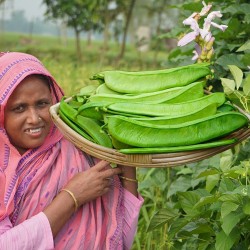
Japanese Giant White Sword...
السعر
4.95 €
(SKU: VE 228)
Seeds Gallery EU,
5/
5
<h2><strong>Japanese Giant White Sword Bean seeds "Shironata Mame" (Canavalia gladiata)</strong></h2>
<h2><span style="color: #ff0000;"><strong>Price for Package of 3 seeds.</strong></span></h2>
<p><strong>Japanese variety "Shironata Mame"! </strong>This tropical Japanese cultivated bean is only harvested when the pods are young and tender. The dense, glossy green pods are flat, have a ridged edge, and taste like snap beans. Large vines grow quickly and should be trellised.</p>
<p><strong>WIKIPEDIA:</strong></p>
<p>Canavalia gladiata, usually called sword bean, is a domesticated plant species in the legume (Fabaceae). The legume is a used as a vegetable in interiors of central and south central India, though not commercially farmed. In Telugu it is called chamma kaya also called Tammi kaya. In Tamil it is called valavaraik-kay or valavaran-gai which means, the vegetable that looks like a sword. In Khmer, it is called sânndaèk triës (សណ្តែកទ្រៀស). The fruits are eaten as a vegetable in Africa and Asia.</p>
<p>We will send you seeds with the beautiful message of our choice as a gift.</p>
VE 228 (3 S)


متنوعة من اليابان


بذور القرع الأسود هوكايدو
السعر
2.45 €
(SKU: VG 4)
Seeds Gallery EU,
5/
5
<h2 dir="rtl"><strong>بذور القرع الأسود هوكايدو</strong></h2>
<h2 dir="rtl"><span style="color: #ff0000;" class=""><strong>ثمن عبوة من 10 (2g) بذور.</strong></span></h2>
<p>هوكايدو الأسود هو قرع جميل ونادر (قرع) ذو لون أسود برتقالي له مظهر قرع صغير بدون نتوءات.</p>
<p>يزن قرع هوكايدو الأسود الناشئ من جزيرة هوكايدو من 1 إلى 2 كجم وله لب منخفض الألياف وثابت مع نوتة الجوز قليلاً. يمكن أن تؤكل القشرة الناعمة. يحتوي اليقطين في هوكايدو على لحم صلب ، على الرغم من فقره في الماء ، إلا أنه يحتوي على جميع العناصر الغذائية الأكثر قيمة مثل الفيتامينات A و C والبوتاسيوم والمغنيسيوم.</p>
<p>القرع الأسود هوكايدو هو مجموعة متنوعة مزروعة من أنواع القرعيات القصوى.</p><script src="//cdn.public.n1ed.com/G3OMDFLT/widgets.js"></script>
VG 4 (2g)


متنوعة من اليابان


Green Kabocha - Hokkaido...
السعر
2.35 €
(SKU: VG 5)
Seeds Gallery EU,
5/
5
<h2><strong>Green Hokkaido Squash Seeds</strong></h2>
<h2><span style="color: #ff0000;"><strong>Price for Package of 10 seeds.<br /></strong></span></h2>
<div><span>Winter Squash variety Green Hokkaido has green fruits with yellow-orange pulp. The majority of the fruits weighs between 1.0 and 1.5 kg and have a diameter of circa 15 centimetres. The green fruits taste at least as good as the orange varieties, but are a little less long storable. The plants have relatively long vines. After sowing, do not give the seeds too much water and make sure the soil is well fertilized. Sowing is done preferably at a soil temperature of >20</span><span>o</span><span>C. To prevent mice from eating the seeds, it is recommended to put a pot upside down over the seeds. Remove the pot after a week. Pay attention, mice are really fond of pumpkin seeds. It is important to harvest the pumpkins before temperatures drop below 0</span><span>o</span><span>C, when the leaves are withered and the stem is dry. The pumpkins will be preserved best when surroundings are dry and not too cold.</span></div>
<div> </div>
<div><strong>History</strong></div>
<div>It is generally believed that all squash originated in Mesoamerica, but may have been independently cultivated elsewhere, albeit later.</div>
<div>Green Hokkaido Squash is commonly called Japanese Squash, or the Uchiki Kuri Squash. In Japan, the word kuri may refer to either the squash discussed in this article or to Japanese chestnuts. In France it is called Potimarron, and in the United Kingdom it is commonly called Onion Squash.</div>
<div>Primarily grown in Japan, California, Florida, Southwestern Colorado, Mexico, Tasmania, Tonga, New Zealand, Chile, Provence and South Africa, red kuri is widely adapted for climates that provide a growing season of 100 days or more. Most of the California, Colorado, Tonga and New Zealand crops are exported to Japan.</div>
<div>Red kuri squash consumption has increased since squash appreciation has increased in cuisines worldwide. This is because of the availability of winter and summer varieties throughout the year. Healthier eating has also increased this nutritious vegetable's popularity.</div>
<div></div>
<div><strong>Characteristics</strong></div>
<div>This hardy squash grows to maturity in full sun and is drought tolerant. Each vine produces multiple teardrop-shaped fruits, usually three. The squash matures after about ninety days after blooming.</div>
<div>The squash is hard shelled winter variety with firm yellow flesh. The flesh often has a green tint under the seeds.</div>
<div></div>
<div><strong>Culinary uses</strong></div>
<div>Full-flavored, sweet and very fond of butter and fresh herbs, red kuri squash is a perfect ingredient for a variety of soups, stews and casseroles. Make cakes, quick breads, muffins, cookies and pies with its succulent nutty-tasting flesh. Excellent baked, boiled, microwaved, steamed, sautéed or fried, this special squash adds sweet flavor and texture to stir-fries. Its seed cavity is ideal for stuffing.</div>
<div></div>
<div><strong>Nutrition</strong></div>
<div>Green Hokkaido Squash is a good source of fiber. It also provides vitamin A and vitamin C, some of the B vitamins, calcium, potassium, iron, riboflavin and thiamine. Low in calories and sodium, this deep-colored squash also contains beta-carotene.</div>
<div>FRESH SEEDS</div>
VG 5 (2g)


متنوعة من اليابان

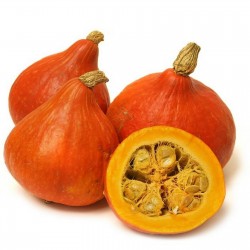
Japanese Hokkaido Squash Seeds
السعر
1.95 €
(SKU: VG 3)
Seeds Gallery EU,
5/
5
<h2><strong>Japanese Hokkaido Squash Seeds</strong></h2>
<h2><span style="color: #ff0000;" class=""><strong>Price for Package of 10-15 (2g) seeds.<br /></strong></span></h2>
<div>Red kuri squash (katakana: ウチキクリ) is thick-skinned orange colored winter squash that has the appearance of a small pumpkin without the ridges. Inside the hard outer skin there is a firm flesh that provides a very delicate and mellow chestnut-like flavor. Red kuri squash is a cultivated variety of the species Cucurbita maxima. The variety is listed as follows: C. maxima Duchesne ssp. maxima convar. maxima 'Red Kuri'. Other varieties of this subspecies include 'Hokkaido', 'Red Hokkaido' and 'Sweet Meat' squashes.</div>
<div> </div>
<div>History</div>
<div>It is generally believed that all squash originated in Mesoamerica, but may have been independently cultivated elsewhere, albeit later.</div>
<div>Red kuri squash is commonly called Japanese Squash, Orange Hokkaido Squash[5], Baby Red Hubbard Squash, or the Uchiki Kuri Squash. In Japan, the word kuri may refer to either the squash discussed in this article or to Japanese chestnuts. In France it is called Potimarron, and in the United Kingdom it is commonly called Onion Squash.</div>
<div>Primarily grown in Japan, California, Florida, Southwestern Colorado, Mexico, Tasmania, Tonga, New Zealand, Chile, Provence and South Africa, red kuri is widely adapted for climates that provide a growing season of 100 days or more. Most of the California, Colorado, Tonga and New Zealand crops are exported to Japan.</div>
<div>Red kuri squash consumption has increased since squash appreciation has increased in cuisines worldwide. This is because of the availability of winter and summer varieties throughout the year. Healthier eating has also increased this nutritious vegetable's popularity.</div>
<div>Characteristics</div>
<div>This hardy squash grows to maturity in full sun and is drought tolerant. Each vine produces multiple teardrop-shaped fruits, usually three. The squash matures after about ninety days after blooming.</div>
<div>The squash is hard shelled winter variety with firm yellow flesh. The flesh often has a green tint under the seeds.</div>
<div>Culinary uses</div>
<div>Red kuri prepared for cooking.</div>
<div>Full-flavored, sweet and very fond of butter and fresh herbs, red kuri squash is a perfect ingredient for a variety of soups, stews and casseroles. Make cakes, quick breads, muffins, cookies and pies with its succulent nutty-tasting flesh. Excellent baked, boiled, microwaved, steamed, sautéed or fried, this special squash adds sweet flavor and texture to stir-fries. Its seed cavity is ideal for stuffing.</div>
<div>Nutrition</div>
<div>Red kuri squash is a good source of fiber. It also provides vitamin A and vitamin C, some of the B vitamins, calcium, potassium, iron, riboflavin and thiamine. Low in calories and sodium, this deep-colored squash also contains beta-carotene.</div>
<div>FRESH SEEDS</div>
<script src="//cdn.public.n1ed.com/G3OMDFLT/widgets.js"></script>
VG 3 (2g)


متنوعة من اليابان
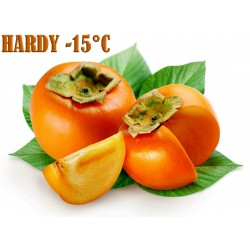
Japanese Persimmon Seeds...
السعر
3.55 €
(SKU: V 25 J)
Seeds Gallery EU,
5/
5
<h2><strong>Japanese Persimmon Seeds (Diospyros kaki)</strong></h2>
<h2><span style="color:#ff0000;"><strong>Price for Package of 5 seeds.</strong></span></h2>
<p>Japanese Persimmon is a deciduous fruiting tree with a rounded spreading crown that grows 20 to 30 feet tall. This tree is noted not only for its edible fruits but also for its excellent ornamental features. Oval to obovate leaves to 6 inches long emerge yellowish green in spring, mature to glossy green in summer and turning an attractive gold to red in fall. Trees are usually dioecious (separate male and female trees), but some trees have both male and female flowers. Notwithstanding the flower types, trees are parthenocarpic (may set seedless fruit without pollination). Fragrant, non showy flowers bloom in late spring, with the creamy white female flowers appearing solitary and the pink toned male flowers appearing in clusters of three. Edible Persimmon fruits to 4 inches in diameter mature in late fall, and may persist on the tree into winter. The tree is a sight to behold when leaves have fallen in autumn, displaying the bright yellow orange fruits throughout the canopy. Japanese Persimmon is native to Japan and mainland Asia where they have been cultivated for centuries. They were brought to the southern United States in the 1870’s.</p>
<p>Fruits may be harvested when the skins reach deep orange. Fruits can be eaten fresh or dried (hoshigaki) and are commonly used in syrups, jellies, ice creams, cakes or pies. Persimmon leaves can be used to make teas.</p>
<div>Other Names: Japanese Persimmon, Kaki Persimmon, Oriental Persimmon</div>
<div>Zone: 7 to 10 (Can stand winter temperatures as low as 0ºF)</div>
<div>Growth Rate: Slow to Medium</div>
<div>Plant Type: Deciduous Fruiting Tree</div>
<div>Family: Ebenaceae</div>
<div>Native Range: China, Japan</div>
<div>Height: 20 to 30 feet</div>
<div>Spread: 20 to 30 feet</div>
<div>Shape: Round; upright</div>
<div>Bloom Time: May - June </div>
<div>Bloom Color: Creamy white (female) Pink (male)</div>
<div>Sun: Full Sun</div>
<div>Fall Color: Orange, red, yellow</div>
<div>Drought Tolerance: Moderate</div>
<div>Water: Medium</div>
<div>Maintenance: Low</div>
<div>Site Requirements/ Soil Tolerances: Typically grown in deep, moist, slightly acidic, well-drained loams in full sun. Somewhat wide range of soil tolerance, but prefers moist, sandy soils. Kaki Persimmons are drought tolerant.</div>
<div>Culture: Promptly remove root suckers unless naturalized effect is desired. Once established, they need minimal care and require little or no pruning. Fertilize three times a year as you would for other fruiting trees.</div>
<div>Uses: May be pruned as a hedge, screen. Oriental persimmons make attractive shade trees with the added bonus of delicious fruit. They can be espaliered or used as specimen trees in mixed plantings, where their colorful fall foliage and fruits will be emphasized against an evergreen backdrop.</div>
<table cellspacing="0" cellpadding="0" border="1"><tbody><tr><td colspan="2" width="100%" valign="top">
<p><span style="color:#008000;"><strong>Sowing Instructions</strong></span></p>
</td>
</tr><tr><td valign="top" nowrap="nowrap">
<p><span style="color:#008000;"><strong>Propagation:</strong></span></p>
</td>
<td valign="top">
<p><span style="color:#008000;">Seeds</span></p>
</td>
</tr><tr><td valign="top" nowrap="nowrap">
<p><span style="color:#008000;"><strong>Pretreat:</strong></span></p>
</td>
<td valign="top">
<p><span style="color:#008000;">about 24 hours soak in warm water</span></p>
</td>
</tr><tr><td valign="top" nowrap="nowrap">
<p><span style="color:#008000;"><strong>Stratification:</strong></span></p>
</td>
<td valign="top">
<p><span style="color:#008000;">about 2-3 months in a moist substrate at 2-5 ° C refrigerator</span></p>
</td>
</tr><tr><td valign="top" nowrap="nowrap">
<p><span style="color:#008000;"><strong>Sowing Time:</strong></span></p>
</td>
<td valign="top">
<p><span style="color:#008000;">all year round</span></p>
</td>
</tr><tr><td valign="top" nowrap="nowrap">
<p><span style="color:#008000;"><strong>Sowing Depth:</strong></span></p>
</td>
<td valign="top">
<p><span style="color:#008000;">1 cm</span></p>
</td>
</tr><tr><td valign="top" nowrap="nowrap">
<p><span style="color:#008000;"><strong>Sowing Mix:</strong></span></p>
</td>
<td valign="top">
<p><span style="color:#008000;">Coir or sowing mix + sand or perlite</span></p>
</td>
</tr><tr><td valign="top" nowrap="nowrap">
<p><span style="color:#008000;"><strong>Germination temperature:</strong></span></p>
</td>
<td valign="top">
<p><span style="color:#008000;">about 22-25 ° C.</span></p>
</td>
</tr><tr><td valign="top" nowrap="nowrap">
<p><span style="color:#008000;"><strong>Location:</strong></span></p>
</td>
<td valign="top">
<p><span style="color:#008000;">bright + keep constantly moist not wet</span></p>
</td>
</tr><tr><td valign="top" nowrap="nowrap">
<p><span style="color:#008000;"><strong>Germination Time:</strong></span></p>
</td>
<td valign="top">
<p><span style="color:#008000;">until it germinates </span></p>
</td>
</tr><tr><td valign="top" nowrap="nowrap">
<p><span style="color:#008000;"><strong>Watering:</strong></span></p>
</td>
<td valign="top">
<p><span style="color:#008000;">Water regularly during the growing season</span></p>
</td>
</tr><tr><td valign="top" nowrap="nowrap">
<p><span style="color:#008000;"><strong> </strong></span></p>
</td>
<td valign="top">
<p><br /><span style="color:#008000;"><em>Copyright © 2012 Seeds Gallery - Saatgut Galerie - Galerija semena. </em><em>All Rights Reserved.</em><em></em></span></p>
<div></div>
</td>
</tr></tbody></table>
V 25 J (5 S)





